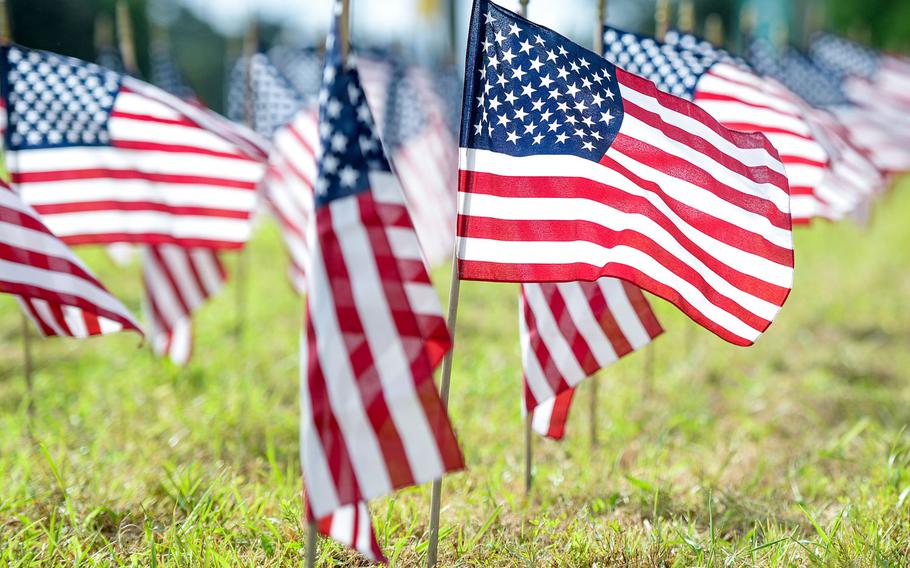
American flags stand in the ground Sept. 1, 2020, outside of the 177th Fighter Wing, Egg Harbor Township, N.J., representative of veteran suicides. A recent Rand Corp. report said that disparities along racial and ethnic lines in regard to suicide attempts warrant Defense Department attention. ( Hunter Hires/U.S. Air National Guard )
Black, Hispanic and Asian troops report “significantly higher” rates of suicide attempts than their white counterparts, a new study that examined mental health disparities within the ranks has found.
Although there were no widespread differences between races and ethnicities in terms of overall behavioral health, the disparities in attempted suicide rates warrant Defense Department attention, the nonprofit research group Rand Corp. said in a recent report.
Rand recommended the Pentagon “consider focusing attention on suicide attempts, particularly among non-Hispanic black, Hispanic, and non-Hispanic Asian military personnel.”
The higher rate of suicide attempts among Black and Hispanic troops when compared to whites is at odds with the pattern found in the civilian world, Rand said.
There were 1.76 suicide attempts among Black troops for each by a white service member. Outside the military, for every white civilian suicide attempt there were .31 attempts by Black civilians, the report stated. Hispanic troops were more likely than white troops to attempt suicide at a similar rate, the study found.
Overall, 2.6% of survey respondents reported a suicide attempt after joining the military.
Rand used various models to analyze the data and “found that, in comparison with white service members, non-Hispanic Asian and non-Hispanic black service members reported significantly higher likelihood of suicide attempt.”
Discrimination and family conflict are among the risk factors identified in the civilian world for suicide attempts among minorities.
“Understanding whether these risk factors as well as other military specific factors (e.g., unit cohesion, leadership support) contribute to the observed racial/ethnic minority disparities in suicide attempt among military personnel would enable DoD to potentially better target suicide prevention efforts directed as these at-risk groups,” Rand said.
Rand used 2015 military data and nationally representative civilian datasets to make its comparisons.
Other findings involved gender disparities, with military women being more likely than men to report mental health problems, but less likely to abuse alcohol. The disparity was similar to ones found between men and women in the civilian world, Rand said.
Meanwhile, gay and bisexual service members and civilians reported higher rates of heavy drinking relative to their heterosexual peers. Those differences were even greater within the military, the report said.
“DoD should ensure that prevention programs and behavioral health treatments address the specific needs and stressors experienced by minority service members to ensure optimal readiness in the military,” the Rand report stated.
For “major depressive disorders,” Rand found no evidence of significant rate differences between minorities and their white counterparts.
vandiver.john@stripes.com Twitter: @john_vandiver